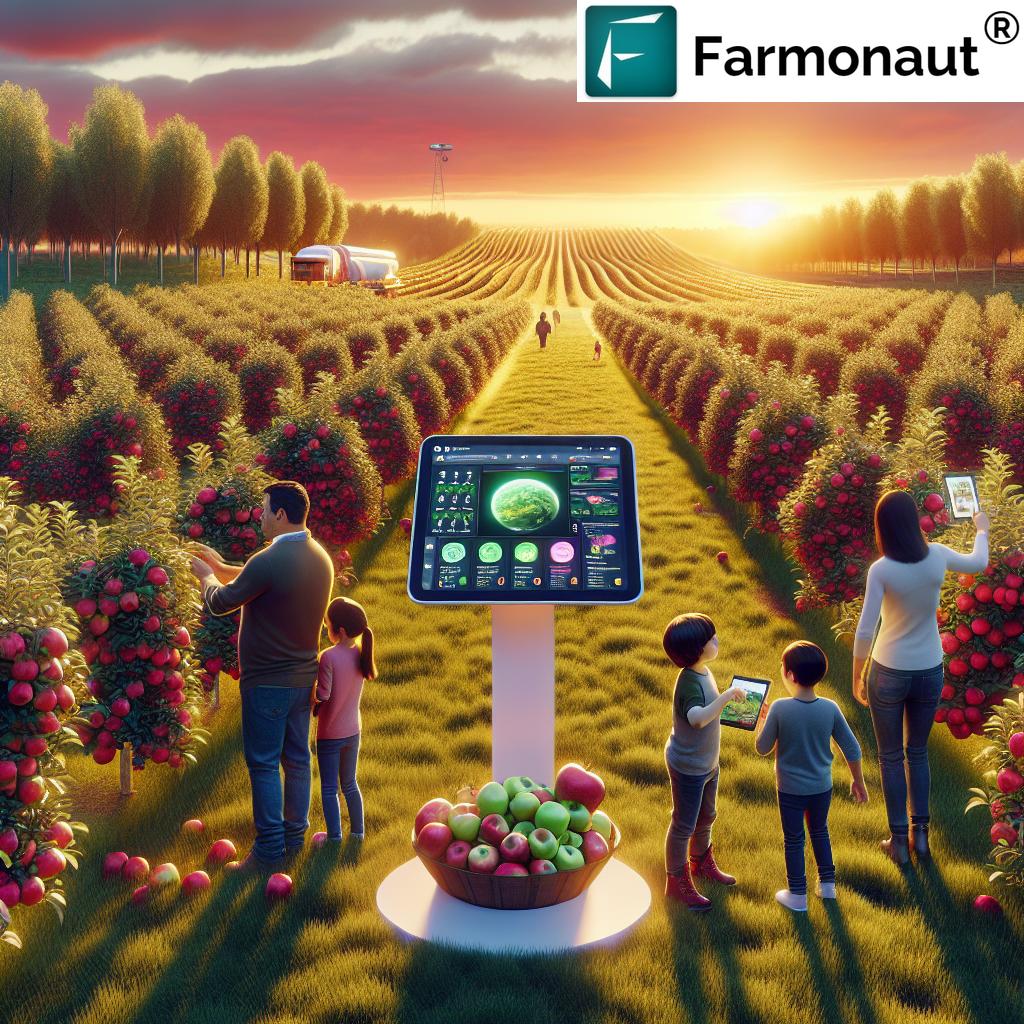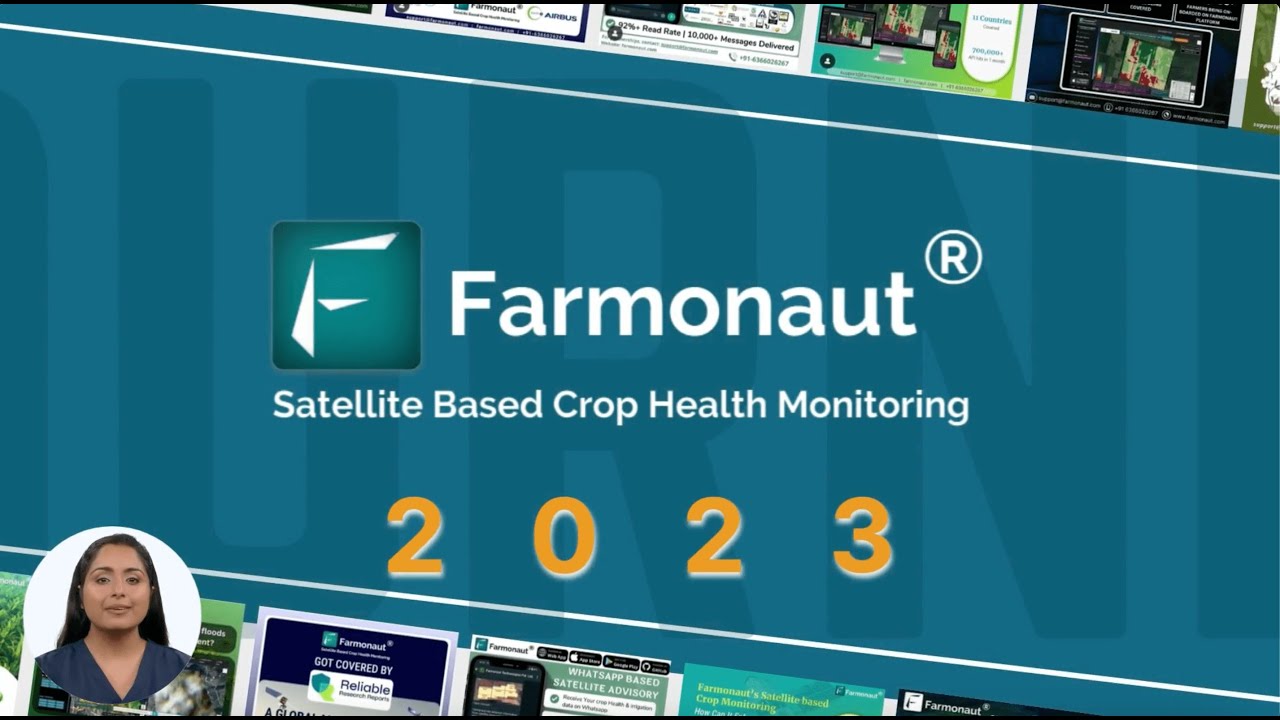Mastering Agritourism: Turn Farm Management Mistakes into Growth Opportunities in the Midwest
“Agritourism operators who embrace errors and adapt see up to 30% increase in visitor satisfaction and revenue.”

Welcome to our comprehensive guide on mastering agritourism in the Midwest! In this blog post, we’ll explore how farm management mistakes can be transformed into valuable growth opportunities. As the agricultural landscape evolves, so does the potential for agritourism to become a significant revenue stream for farmers across the region. Whether you’re managing an apple orchard in Michigan or a corn maze in Iowa, we’re here to help you navigate the challenges and capitalize on the opportunities that agritourism presents.
The Rise of Agritourism in the Midwest
Agritourism has become an increasingly popular way for farmers to diversify their income and connect with consumers. In the Midwest, where agriculture is deeply rooted in the culture and economy, this trend has taken hold with particular vigor. From U-pick fruit operations to farm tours and seasonal events, agritourism offers a unique blend of education, entertainment, and agricultural experience.
However, as with any business venture, there are challenges to overcome and lessons to be learned. In this post, we’ll dive into common mistakes made in farm management and agritourism operations, and more importantly, how to turn these missteps into opportunities for growth and innovation.
Embracing Technology in Agritourism
Before we delve into specific mistakes and solutions, it’s crucial to acknowledge the role of technology in modern agriculture and agritourism. Innovative solutions like those offered by Farmonaut can be game-changers for farm management and agritourism operations.
Farmonaut’s satellite-based farm management solutions provide real-time insights into crop health, soil conditions, and weather patterns. This technology can be particularly valuable for agritourism operators looking to optimize their crop production while also managing visitor experiences.
Common Agritourism Mistakes and Growth Opportunities
Let’s explore some of the most frequent mistakes made in agritourism and how they can be transformed into opportunities for growth:
| Mistake Category | Specific Error | Growth Opportunity | Farmonaut Solution |
|---|---|---|---|
| Crop Management | Inefficient irrigation | Implement precision agriculture techniques | Satellite-based crop health monitoring |
| Visitor Experience | Lack of engaging activities | Develop interactive farm tours and workshops | AI-driven insights for crop growth stages to plan activities |
| Marketing Strategies | Poor online presence | Create a robust digital marketing plan | Use farm data to create compelling content |
| Sustainability Practices | Overuse of pesticides | Adopt organic farming methods | Precision pest control based on satellite data |
1. Crop Management: From Inefficiency to Precision
One of the most common mistakes in agritourism is inefficient crop management. This can lead to reduced yields, lower quality produce, and ultimately, a less appealing experience for visitors.
The Mistake: Inefficient Irrigation and Resource Management
Many farms still rely on outdated irrigation methods that waste water and energy. This not only increases operational costs but also negatively impacts crop health and yield.
The Opportunity: Embrace Precision Agriculture
By implementing precision agriculture techniques, farms can optimize resource use, improve crop health, and increase yields. This not only benefits the farm’s bottom line but also creates a more impressive and educational experience for agritourism visitors.
Farmonaut’s Solution
Farmonaut’s satellite-based crop health monitoring system provides real-time data on soil moisture levels, crop health indices, and weather patterns. This allows farmers to make data-driven decisions about irrigation, fertilization, and pest control.
2. Visitor Experience: From Passive to Interactive
Another common mistake in agritourism is failing to provide engaging and interactive experiences for visitors.
The Mistake: Lack of Engaging Activities
Some farms offer only basic tours or U-pick experiences, missing opportunities to truly engage and educate visitors about agriculture.
The Opportunity: Develop Interactive Farm Tours and Workshops
By creating hands-on experiences and educational workshops, farms can offer visitors a deeper understanding of agriculture and create memorable experiences that encourage return visits and word-of-mouth marketing.
Farmonaut’s Solution
Farmonaut’s AI-driven insights can help farmers plan activities around different crop growth stages, ensuring that visitors always have something interesting to see and do, regardless of when they visit.
3. Marketing Strategies: From Offline to Online
In today’s digital age, a weak online presence can significantly hinder an agritourism operation’s success.
The Mistake: Poor Online Presence and Marketing
Many farms rely solely on word-of-mouth or local advertising, missing out on the vast potential of digital marketing.
The Opportunity: Create a Robust Digital Marketing Plan
By developing a strong online presence through a well-designed website, active social media accounts, and targeted digital advertising, farms can reach a wider audience and attract more visitors.
Farmonaut’s Solution
While Farmonaut doesn’t directly provide marketing services, the data and insights from its platform can be used to create compelling content for social media and websites. For example, time-lapse videos of crop growth or infographics about sustainable farming practices can engage potential visitors.
“Midwest farms implementing precision agriculture techniques report an average 15% boost in crop yield efficiency.”
4. Sustainability Practices: From Conventional to Organic
As consumers become more environmentally conscious, farms that don’t prioritize sustainability may find themselves at a disadvantage.
The Mistake: Overreliance on Conventional Farming Methods
Many farms still rely heavily on chemical pesticides and fertilizers, which can be off-putting to environmentally conscious visitors.
The Opportunity: Adopt Organic Farming Methods
By transitioning to organic or sustainable farming practices, farms can attract a growing segment of eco-conscious consumers and create unique educational opportunities around sustainable agriculture.
Farmonaut’s Solution
Farmonaut’s precision agriculture tools can help farms transition to more sustainable practices by providing detailed insights into crop health and soil conditions, allowing for more targeted and efficient use of resources.

5. Seasonal Planning: From Reactive to Proactive
Many agritourism operations struggle with the seasonal nature of their business, leading to feast-or-famine cycles in terms of visitor numbers and revenue.
The Mistake: Lack of Year-Round Planning
Focusing solely on peak seasons (like fall for apple orchards or pumpkin patches) can leave farms struggling during off-seasons.
The Opportunity: Develop Year-Round Attractions
By creating attractions and events for all seasons, farms can maintain a steady stream of visitors and income throughout the year. This might include winter workshops, spring planting events, or summer farm-to-table dinners.
Farmonaut’s Solution
Farmonaut’s weather forecasting and crop monitoring tools can help farmers plan seasonal activities more effectively, ensuring that events align with optimal crop conditions and weather patterns.
6. Education and Interpretation: From Information to Experience
Many agritourism operations underestimate the importance of providing meaningful educational experiences to visitors.
The Mistake: Insufficient Educational Content
Some farms provide only basic information about their crops or animals, missing opportunities to deeply engage visitors in agricultural education.
The Opportunity: Create Immersive Learning Experiences
By developing comprehensive educational programs, farms can position themselves as valuable resources for schools, families, and lifelong learners. This could include interactive exhibits, hands-on workshops, and guided tours that delve into the science and art of farming.
Farmonaut’s Solution
While Farmonaut’s primary focus is on farm management, the data and insights from its platform can be used to create engaging educational content. For example, visualizations of crop growth patterns or explanations of how satellite technology is used in modern farming can provide fascinating material for visitor education programs.
Explore Farmonaut’s API for advanced agricultural data integration
7. Diversification: From Monoculture to Variety
Relying on a single crop or attraction can leave agritourism operations vulnerable to market fluctuations and changing visitor preferences.
The Mistake: Over-Reliance on a Single Attraction
Many farms focus on one main attraction, such as a corn maze or apple picking, which can limit their appeal and resilience.
The Opportunity: Diversify Offerings and Experiences
By developing a range of attractions and experiences, farms can appeal to a wider audience and create multiple revenue streams. This might include adding value-added products, hosting events, or incorporating different types of crops or livestock.
Farmonaut’s Solution
Farmonaut’s crop monitoring and management tools can help farmers effectively manage a more diverse range of crops, providing the data needed to optimize growth and yield across various plant types.
8. Technology Integration: From Traditional to High-Tech
In an increasingly digital world, farms that fail to incorporate technology into their operations and visitor experiences may find themselves falling behind.
The Mistake: Resistance to Technological Adoption
Some farms resist incorporating new technologies, either due to cost concerns or a desire to maintain a “traditional” image.
The Opportunity: Embrace AgTech for Enhanced Experiences
By integrating technology into both farm operations and visitor experiences, agritourism destinations can offer unique, modern attractions while also improving efficiency and sustainability.
Farmonaut’s Solution
Farmonaut’s suite of high-tech farm management tools exemplifies how technology can be seamlessly integrated into agricultural operations. These tools can also be showcased to visitors as part of educational experiences about modern farming techniques.
9. Customer Service: From Transactional to Relational
In the competitive agritourism market, exceptional customer service can be a key differentiator.
The Mistake: Neglecting Customer Experience
Some farms focus solely on their agricultural operations, overlooking the importance of creating a welcoming and memorable experience for visitors.
The Opportunity: Develop a Customer-Centric Approach
By prioritizing customer service and creating a warm, welcoming atmosphere, farms can encourage repeat visits and positive word-of-mouth marketing. This might include training staff in hospitality, creating comfortable rest areas, or implementing a customer feedback system.
Farmonaut’s Solution
While Farmonaut’s primary focus is on farm management, its tools can indirectly contribute to improved customer service. For example, accurate crop forecasting can help farms better prepare for visitor influxes, ensuring a smoother experience for guests.
Access Farmonaut’s API Developer Docs for custom agtech solutions
10. Regulatory Compliance: From Reactive to Proactive
Navigating the complex landscape of agricultural and tourism regulations can be challenging for agritourism operators.
The Mistake: Overlooking Regulatory Requirements
Some farms may inadvertently fail to comply with all relevant regulations, risking fines or shutdowns.
The Opportunity: Embrace Compliance as a Competitive Advantage
By staying ahead of regulatory requirements and implementing best practices in areas like food safety, accessibility, and environmental protection, farms can not only avoid problems but also use their compliance as a marketing point to attract conscientious visitors.
Farmonaut’s Solution
Farmonaut’s data tracking and reporting capabilities can help farms maintain detailed records of their agricultural practices, which can be valuable for demonstrating compliance with various regulations.
Implementing Changes: A Step-by-Step Approach
Transforming mistakes into opportunities requires a systematic approach. Here’s a step-by-step guide to implementing positive changes in your agritourism operation:
- Assess Current Operations: Conduct a thorough audit of your farm’s current practices, identifying areas for improvement.
- Set Clear Goals: Define specific, measurable objectives for each area you want to improve.
- Develop an Action Plan: Create a detailed plan for implementing changes, including timelines and resource allocation.
- Invest in Technology: Consider how tools like Farmonaut can support your improvement efforts.
- Train Staff: Ensure all team members are equipped to support new initiatives and provide excellent customer service.
- Monitor Progress: Regularly review your progress and adjust your strategies as needed.
- Seek Feedback: Continuously gather input from visitors and staff to inform ongoing improvements.
Conclusion: Embracing Change for Agritourism Success
In the dynamic world of agritourism, the ability to learn from mistakes and adapt to changing circumstances is crucial for success. By embracing technology, prioritizing sustainability, and focusing on creating exceptional visitor experiences, Midwest farms can transform challenges into opportunities for growth and innovation.
Remember, every mistake is a chance to learn and improve. With the right mindset and tools, your agritourism operation can thrive, providing memorable experiences for visitors while supporting sustainable agricultural practices.
As you embark on your journey to master agritourism, consider how Farmonaut’s advanced farm management solutions can support your efforts. From precision crop monitoring to data-driven decision-making, our tools are designed to help you optimize your operations and create unforgettable experiences for your visitors.
Farmonaut Subscriptions
FAQ Section
Q: What is agritourism?
A: Agritourism is a form of commercial enterprise that combines agriculture and tourism, allowing farms to offer experiences such as tours, workshops, and direct sales to visitors.
Q: How can technology improve agritourism operations?
A: Technology like Farmonaut’s satellite-based farm management solutions can optimize crop production, improve resource management, and provide data for educational content and marketing materials.
Q: What are some popular agritourism activities in the Midwest?
A: Popular activities include corn mazes, apple picking, pumpkin patches, farm tours, hayrides, and farm-to-table dining experiences.
Q: How can farms attract visitors year-round?
A: Farms can develop seasonal attractions, offer educational workshops, host events, and create indoor experiences to maintain visitor interest throughout the year.
Q: What regulations should agritourism operators be aware of?
A: Key regulations often include food safety standards, zoning laws, liability insurance requirements, and accessibility guidelines. It’s important to consult with local authorities for specific requirements in your area.
By implementing these strategies and leveraging advanced tools like Farmonaut, your agritourism operation can turn challenges into opportunities, creating a thriving, sustainable business that delights visitors and supports the agricultural heritage of the Midwest.

















